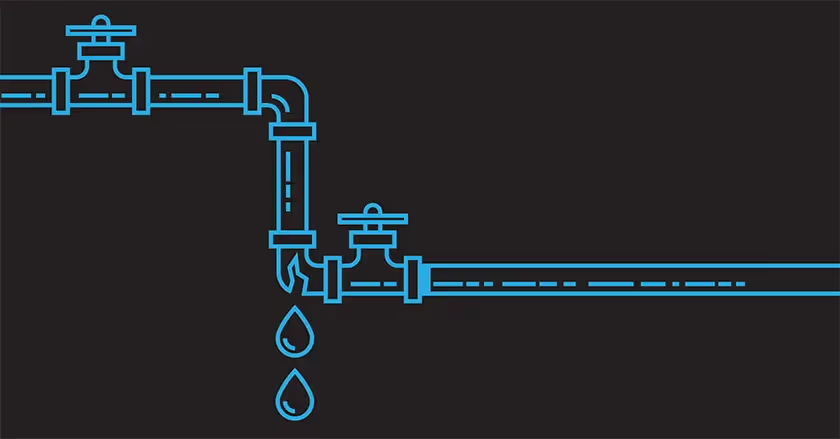What Is 'Leaky' Distribution?
How well are you keeping track of all your product across various marketplaces and sellers? Do you have a leaky distribution problem on your hands?
Leaky distribution. It’s a pernicious foe that can seriously harm the success of your business, and chances are, if it’s happening, it’s happening right under your nose. But what is leaky distribution and why does it matter?
What is leaky distribution?
Imagine that your house has a leaky faucet or a leaky pike. Instead of firmly containing and transporting your water from point A to point B, leaky plumbing creates water loss which over time can rack up the cost of your water bill and also compromise the entire system if left unchecked for too long.

Leaky distribution works in a similar fashion.Leaky distribution means that you’re losing products en route to or from the target retailer or distributor. We often call this gray market activity.Gray market activity can take place at multiple points in your distribution chain, and it takes several forms. It might be theft of a product, diversion of a product from an authorized retailer to a rogue seller, or unauthorized liquidation of a product—maybe a retailer at the end of the chain has bought too much of a certain product and they choose to lower the price below MAP to get rid of it.Whenever your product is being distributed in an unauthorized or unpermissioned manner, that’s leaky distribution.
What causes leaky distribution?
According to Jared Mason, Pattern’s Director of Brand Management, the biggest reason why leaky distribution happens is that a brand doesn’t have clearly defined policies and procedures in place that everybody in their chain of distribution should be following, and those distributors often take advantage of it.“Most companies want to do the right thing,” Mason said. “Most distributors are like, ‘I’m only going to do what my agreement with this manufacturer says I can do. But if my agreement doesn’t say anything about it, then I’m just going to do what I can to make money.’”
Why does leaky distribution matter?
Manufacturers are often apathetic about leaky distribution, Mason said, because they think they’ve already made their money selling their product to the distributor. That assumption is a mistake.Even though it might seem like a small issue at first, leaky distribution can evolve into a very large headache for your business that has tangible negative impacts on your profits, your relationship with your distributors, and your relationship with your customers. It allows bad players to devalue your product and your brand across multiple channels, including your brick and mortar retailers. It can harm your brand image, it can eat into your profits, and it can create distrust in the market so that your distributors who are playing by the rules lose incentive to work with you and sell for you.
An example
Let’s say you’re a supplement manufacturer, and you’re selling your product to a distributor. That distributor in turn sells those supplements to Walmart or Target, or to doctors’ offices or homeopathic clinics.In this hypothetical scenario, let’s imagine that one of those retail distributors realizes they’ve bought too much of your product, and it isn’t selling, so they choose to lower the price to liquidate it. Now you have a recipe for trouble.It is very common in these kinds of scenarios for individuals to walk into a retail location that’s liquidating a product, buy up the entire supply of the product, and then relist it on Amazon at 5 or 10% over wholesale to make money off of it.Once this happens, none of your other distributors are safe, not even your brick and mortar retailers. They cannot compete with lowered pricing online unless they lower their own pricing to match it, and pretty soon, you have a situation where distributors are battling it out on cost and steadily losing their margins in the process. This is called price erosion, and it can lead you headfirst into a Profitability Death Spiral.
When prices are eroded by gray market activity, it signals to your consumers that your product might not be as good a quality as you claim, or if they purchase your product from an unauthorized seller and have a bad experience, they’ll think negatively of your brand.Price erosion signals to your distributors (as well as your potential distributors) that they can’t make a profit carrying your product, so they’ll ask you to sell it to them for less or they won’t carry it at all. Finally, it doesn’t sit well for marketplaces like Amazon whose entire business model is centered on giving consumers a convenient, quality experience. Your brand may be penalized in these spaces as a result.
How do you stop leaky distribution?
The solution to leaky distribution is to get proactive about your policies and make sure they’re enforced.“If there is no policy governing the relationship between the manufacturer and the distribution chain, then they can legally do what they want,” Mason said. “And so the solution is to put in place a reseller policy, an online sales policy, an ecommerce policy, something—or all of the above—that says, ‘You can buy my product, you can even post it online, but you can’t post it in a marketplace.’”A good policy, Mason said, has clear limitations or outlines on where a product can be sold—whether that be in-store or online—clear delineation about price ranges that it can be sold at, and MAP requirements among other things. You’ll want to consult with a legal professional to hammer out the details.
Leaky distribution is the first step
When it comes to brand protection and full marketplace control, leaky distribution is just one of 3 main facets. Interested in learning more about guarding your brand against unwanted sellers and unauthorized pricing? Tune in to our upcoming webinar: Taking Control of Your Ecommerce Marketplace Presence.



.jpg)





.jpg)

